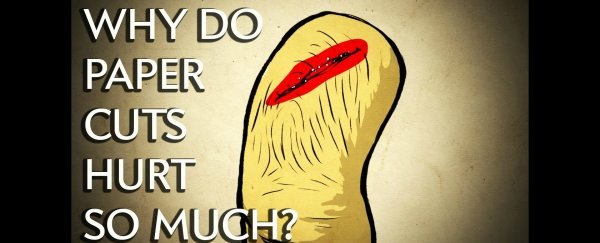As far as injuries go, paper cuts look pretty harmless, but there's no denying the fact that they can feel disproportionately agonising.
And when you look at what's going on at a scientific level, paper cuts are surprisingly brutal, as Ferris Jabr explains in the episode of Scientific American's Instant Egghead below.
For starters, the fact that we're most likely to experience paper cuts on our nerve-coated fingertips makes the potential for pain pretty high from the start.
Our fingers are covered with plenty of neurons, including nociceptors, which are there to detect any potential harm, such as from harsh chemicals, high temperatures and also pressure that might break the skin, as Jabr explains.
Any of these feelings will trigger electrical and chemical signals that make the brain painfully aware of an injury, and this tell us tostop doing whatever it is we're doing.
But a paper cut doesn't just cause the pain of a regular cut. Although it may look like a pretty clean incision, if you look at paper under a microscope it's actually a nightmarishly jagged surface that rips apart our cells and nerve endings.
"The piece of paper cuts through skin more like a small saw than a knife," Jabr explains. "As if that wasn't horrible enough, paper leaves behind chemical particles, irritating the wound."
Because paper cuts are so shallow, they actually don't bleed or clot very much, which leaves all your tissue and nerves exposed. Ouch.
Plus, there's also the psychological pain, which comes from knowing that we can be injured so badly by something as small and innocuous as paper. We made you paper, why do you have to be so mean?
Check out the episode of Scientific American's Instant Egghead below to find out more.

Source: Scientific American
